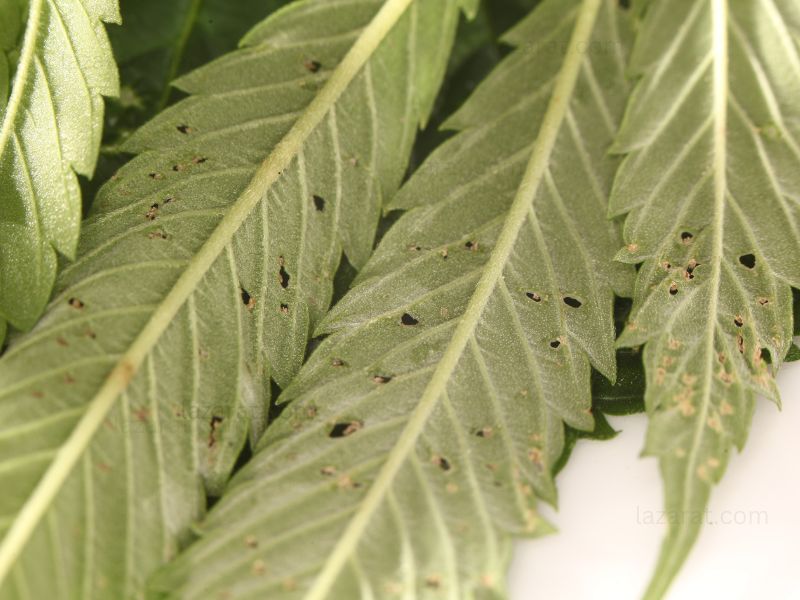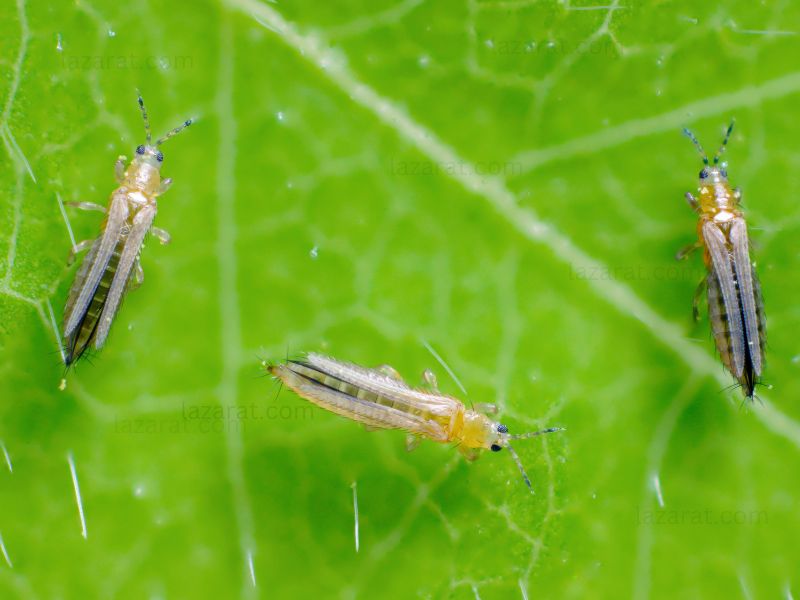Introduction to Organic Pest Control for Marijuana Plants
In the realm of marijuana cultivation, pest control is a pivotal concern, shaping the health and yield of the crops. Traditional methods often lean heavily on chemical solutions, but the tide is turning towards more sustainable, organic techniques. This shift isn’t just a nod to environmental consciousness; it’s a strategic move to preserve the integrity and quality of the marijuana plants.
Why Organic Pest Control?
The choice of organic methods over chemical pesticides is not merely a trend; it’s a response to the growing awareness of the impacts these chemicals have on both the environment and the end product. In marijuana cultivation, where purity and quality are paramount, the use of harsh chemicals can be counterproductive. This is why organic pest control methods are gaining traction. They offer a way to protect crops from pests while maintaining the plant’s natural quality and potency.
- Health and Safety: Chemical pesticides can leave residues on marijuana plants, potentially affecting the final product’s purity and safety. Organic methods, in contrast, use natural substances that are less likely to leave harmful residues.
- Environmental Impact: Synthetic pesticides can harm non-target organisms and disrupt ecosystems. Organic pest control, as highlighted in a comprehensive guide on organic pest control methods, emphasizes sustainability and environmental friendliness.
- Effectiveness: Contrary to some misconceptions, organic pest control can be equally effective as chemical methods. The key is understanding the pests’ biology and behavior, as well as how natural solutions can be strategically employed.
The Shift Towards Organic Methods
The move towards organic pest control in marijuana cultivation mirrors a broader shift in agricultural practices. It’s a reflection of an increasing commitment to sustainable farming practices, as well as consumer demand for organically produced goods. In cannabis cultivation, specifically, this shift is also driven by the unique characteristics of the plant and its usage.
- Consumer Preferences: As consumers become more health-conscious, there is a growing preference for marijuana products free from synthetic chemicals.
- Regulations and Standards: With the legalization of marijuana in many regions, there are emerging regulations that favor or even require organic cultivation practices.
- Plant Characteristics: Marijuana plants have a high absorption rate, which makes them particularly susceptible to chemical residues. This sensitivity further underscores the importance of organic methods, such as those detailed in benefits of companion planting in marijuana cultivation.
Understanding Common Pests in Marijuana Cultivation
Marijuana plants, much like other crops, face threats from various pests, each with its unique characteristics and methods of damage. Identifying these pests early and understanding their behavior are crucial steps in effective organic pest control.
Common Pests in Marijuana Plants
- Spider Mites: These tiny pests are infamous in marijuana cultivation. According to a detailed examination of common cannabis pests, spider mites can devastate a crop by feeding on the leaves, leaving behind telltale stippling marks. They thrive on the underside of leaves and can quickly overrun a plant if not controlled.
- Aphids: Another common nuisance, aphids, also known as blackflies or greenflies, can cause significant damage. They prefer young leaves and fresh flowers and produce a sticky substance called honeydew, which attracts other pests.
- Thrips: These slender pests feed on young leaves, flowers, and buds. They leave silvery or faded patches on the leaves and can transmit harmful plant viruses.
Early Detection and Monitoring Techniques
Detecting these pests early is a vital aspect of effective pest control. Regular monitoring, through visual inspection or the use of traps, helps identify infestations before they become severe. Some key techniques include:
- Visual Inspection: Regularly examining your plants, especially the underside of leaves, can help spot early signs of pests.
- Monitoring Tools: Sticky traps and pheromone traps are useful for identifying and assessing pest levels.
Pest Identification and Its Importance
Correctly identifying the pest is essential for choosing the right control strategy. Different pests require different management techniques. For instance, the control methods for spider mites may not be effective against aphids or thrips. Accurate identification allows for targeted and effective control measures.
- Spider Mites: Look for tiny brown or yellow stippling on leaves and fine webbing around the plant.

- Aphids: Check for small, pear-shaped insects in various colors, along with honeydew residue.

- Thrips: Identify them by looking for silvery trails or scarring on leaves.

Natural Pest Control Methods and Techniques
In the battle against pests in marijuana cultivation, organic integrated pest management (IPM) is a pivotal strategy. It’s a multifaceted approach, integrating various organic methods to minimize pest impact while maintaining ecological balance.
Organic Integrated Pest Management (IPM) Principles
IPM in organic cultivation goes beyond mere pest elimination. It involves understanding pest life cycles, behaviors, and natural predators. The goal is to establish a balanced ecosystem where pests are managed rather than eradicated.
- Diverse Techniques: IPM combines physical, biological, and cultural methods to create a comprehensive pest management system.
- Preventive Focus: Emphasis is placed on preventing pest infestations rather than just reacting to them.
Foliar Sprays for Cannabis Pests: Organic Solutions
Organic foliar sprays are effective tools in the IPM arsenal. These natural concoctions can deter pests without harming the plants or the environment.
- Neem Oil: A popular choice for organic growers, neem oil acts as a repellent and disrupts pests’ life cycles.
- Garlic-Based Sprays: Garlic’s potent smell is an effective natural insecticide against a range of pests.
Companion Planting for Pest Control
Companion planting is an age-old technique with modern applications in marijuana cultivation. By planting certain herbs and flowers alongside cannabis, growers can naturally repel pests.
- Repellent Plants: Herbs like basil and lavender can deter pests with their strong scents.
- Attract Beneficial Insects: Some companion plants attract insects that prey on common cannabis pests.
Biological Pest Control: Predator Mites and Beneficial Insects
Introducing predator mites and other beneficial insects is an effective organic method to control pest populations.
- Predator Mites: These mites feed on harmful pests like spider mites, offering a natural control method.
- Ladybugs and Lacewings: These insects are natural predators of aphids and other common pests.
FAQs and Best Practices in Organic Pest Control
As growers embrace organic methods for pest control in marijuana cultivation, questions and challenges naturally arise. Addressing these queries is crucial for effective implementation. Additionally, best practices help ensure successful pest management while maintaining the integrity and quality of the crop.
Frequently Asked Questions
- What Are the Most Common Pests in Marijuana Cultivation?
Spider mites, aphids, and thrips are among the most prevalent pests. Each has distinct characteristics and requires specific control strategies. - How Can I Prevent Pest Infestations Naturally?
Preventive measures include regular monitoring, maintaining cleanliness in grow areas, and employing techniques like companion planting and natural predators. - Are Natural Pesticides Effective Against All Types of Pests?
While natural pesticides are effective, their efficacy can vary depending on the pest type and the infestation’s severity. Consistent application and combining different methods often yield the best results.
Best Practices in Organic Pest Control
Implementing organic pest control effectively requires a combination of vigilance, knowledge, and adaptability.
- Regular Monitoring: Consistently checking your plants for early signs of pests is essential. This proactive approach allows for timely intervention before infestations escalate.
- Diversity in Methods: Utilizing a range of organic methods, such as natural predators, companion planting, and organic sprays, helps create a robust defense against pests.
- Adaptability: Pests can develop resistance, and environmental conditions can change. Therefore, being adaptable and ready to modify your pest control strategy is crucial.
In conclusion, effective pest control in marijuana cultivation, especially through organic methods, is a blend of art and science. It requires a deep understanding of the pests, the cannabis plant, and the ecosystem. By employing strategies like Integrated Pest Management, foliar sprays, companion planting, and biological controls, growers can protect their crops in a way that’s both effective and environmentally responsible. This approach not only ensures the health and quality of the cannabis plants but also aligns with a sustainable and eco-friendly ethos. As the cannabis industry continues to evolve, so too will the techniques for natural pest management, reflecting a commitment to quality, safety, and environmental stewardship.
© 2023 by Lazarat.com. All rights reserved. No part of this document may be reproduced or transmitted in any form or by any means, electronic, mechanical, photocopying, recording, or otherwise, without prior written permission of Lazarat.com.

Leave a Reply